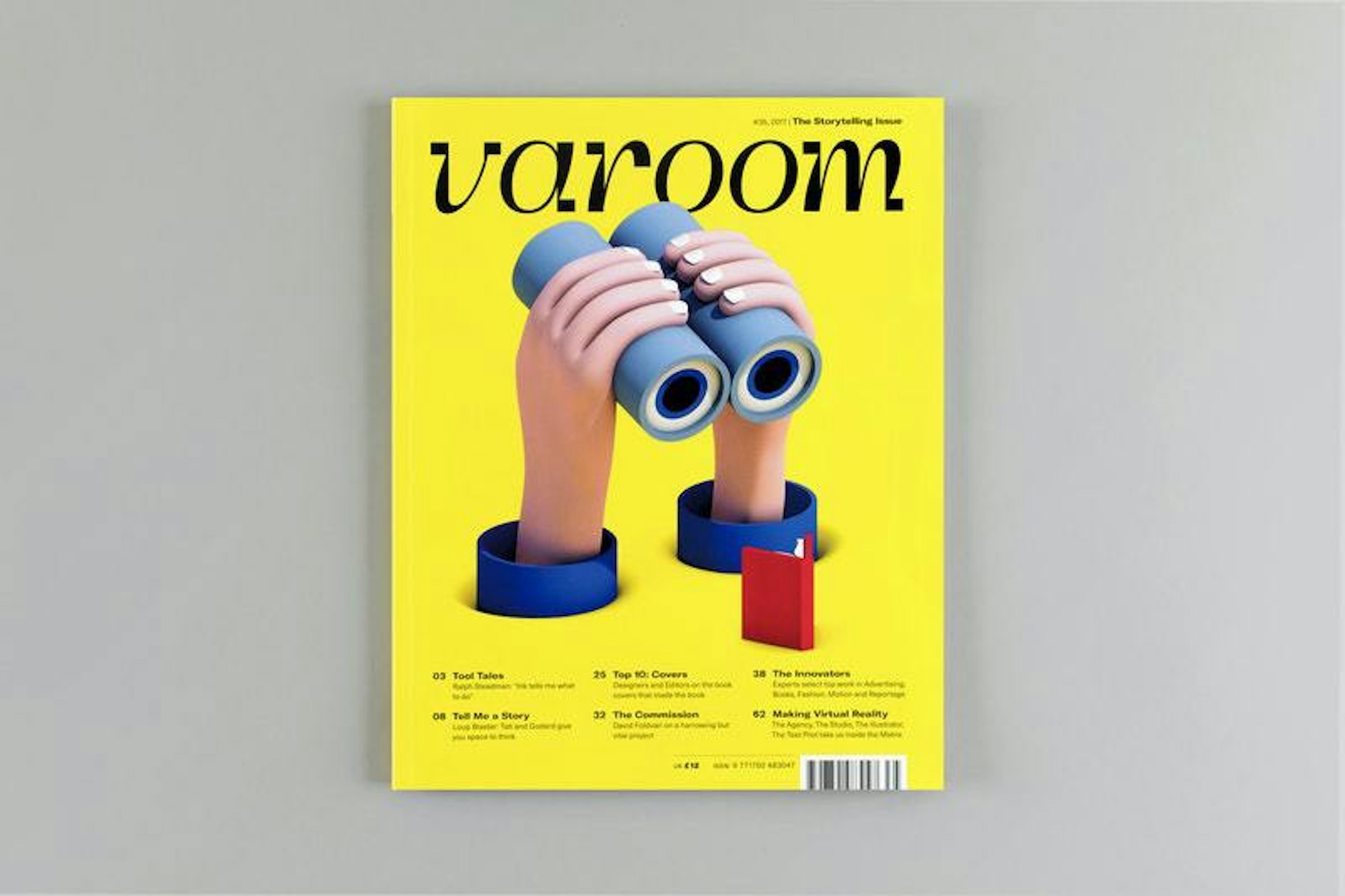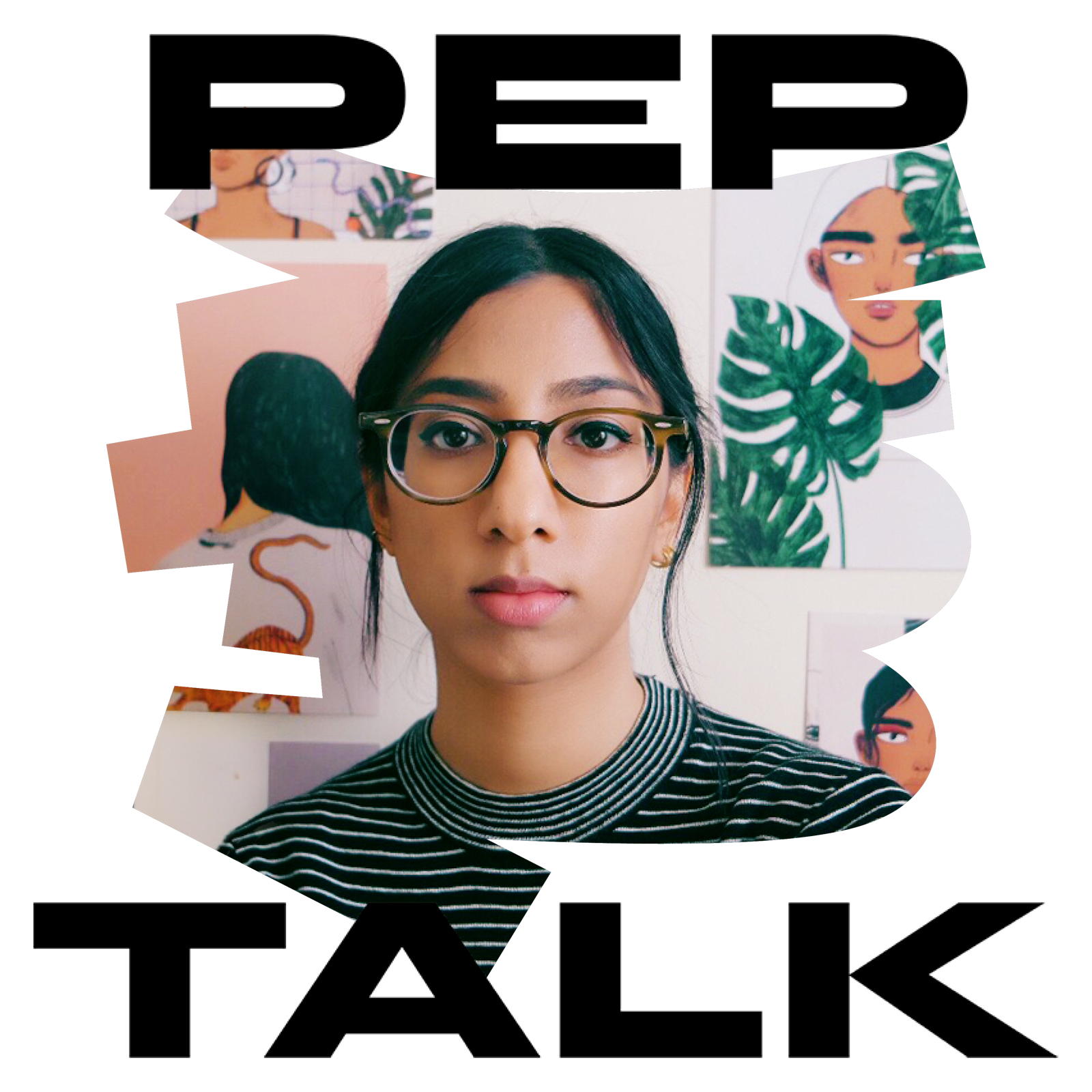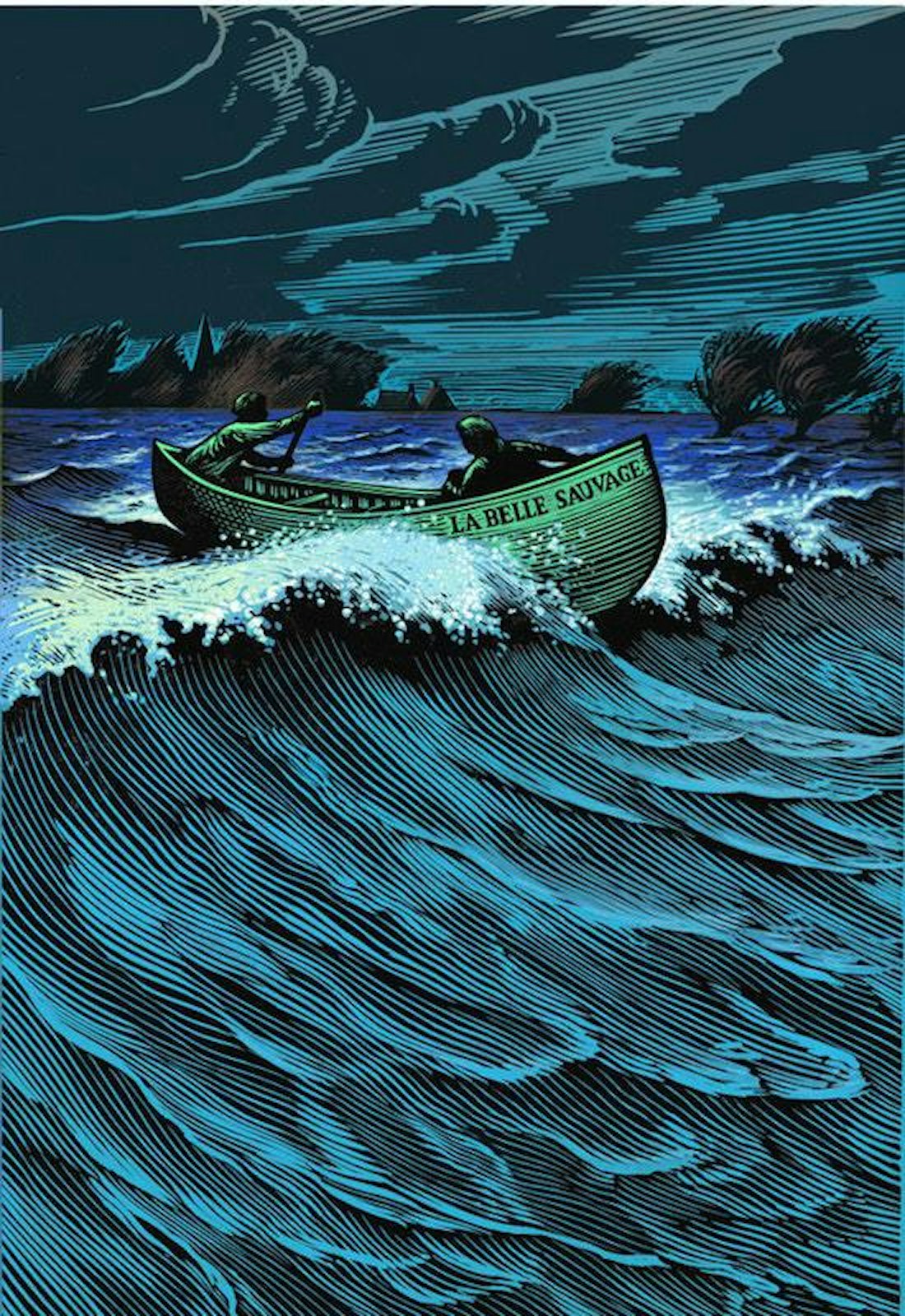Rebecca Hendin tells us what it’s like to be BuzzFeed’s in-house illustrator
Rebecca Hendin will be the first to admit that her role is something of a rarity, and one she landed through relentless hard work and a particularly well-timed pitch. As BuzzFeed UK’s in-house illustrator, her work is seen and shared by countless people across hundreds of illustrations each year. Hers is a world of tight deadlines and a never-ending trickle of briefs, with little time for overthought or multiple revisions. But the working day doesn’t end there: she currently balances the role with freelance commissions, clocking hours that would bring the work shy to tears. From her upbringing in Missouri to life in London, she tells us how she made it to where she is now.

Rebecca Hendin
Job Title
In-house Illustrator and Designer, BuzzFeed UK (July 2015–present)
Based
London
Previous Employment
Freelance Illustrator (2009–present)
Political cartoonist (2015–present), represented by US syndicate Universal Uclick, with a weekly editorial on Daily Kos (2015)
Education
MA Communication Design, Central Saint Martins (2012–2014)
BA Graphic Design, Central Saint Martins (2009–2010)
BA illustration, California College of the Arts in San Francisco (2006–2008)
Website
Social Media
Day-to Day
How would you describe your job?
I work on the art desk at BuzzFeed’s London office. I’m a member of a small team comprised of myself, another illustrator-designer, an art director and two people on the picture desk (where original and commissioned photography is sorted). My job is to create original illustration, design and animation for BuzzFeed outside of the US (there is a separate, larger team of in-house artists and designers for BuzzFeed’s American stuff).
What does a typical working day look like?
A typical day involves waking up later than I mean to, and commuting 30 minutes from my flat in Finsbury Park to the BuzzFeed office in Oxford Circus. I start work around 10am, and it’s straight to drawing and designing for requests scheduled for that day. We have an email listserv so that BuzzFeed writers and editors around the world can request art. These could be for serious longform news pieces, personal essays, humorous ‘buzz’ pieces (think listicles), lifestyle articles, distribution content (social media), or online videos. Then a project will get picked up by whoever is most suited to the brief on the art desk.
Every once in a while, we get to do something really different. Sometimes we get pulled into being in one of BuzzFeed’s videos, or become a test subject for a post. Basically, there’s a lot of variety.
I typically finish at BuzzFeed between 6 and 8pm. Then for the last few months, I’ve been doing a lot of freelance work, so I typically start a second shift at that point. Recently I’ve finished projects for Co-operatives UK, Gimlet Media, and a Brazilian publishing company. I’m currently in the middle of a private portrait commission, and a long-running project for Amnesty International as part of their Write for Rights campaign.
These days, sleep is in pretty short supply. I make sure I leave a bit of personal time for loved ones and walks, but my life is quite work-focused.
“I can work quickly now, but that took years of practice, deep focus and lots of messing up.”

How did you land your current job?
In early 2015, I was working as a political cartoonist and freelance illustrator. As a personal project, I created an illustration series depicting the major political party leaders for the British general election, and wrote a tongue-in-cheek explainer to go alongside it. I pitched it to a few places and it was ultimately published in Politico. I had offered it to BuzzFeed, who responded to say that although they weren’t going to publish it, they had a job for an in-house illustrator if I wanted to apply, so I did!
Where does the majority of your work take place?
I work in a big open-plan office. My team sits in a little huddle around a group of enormous Macs, where I do all of my drawing and designing. Every once in a while I’ll need to be on-site somewhere, but most of the time I work from my desk.
The environment is lively and friendly, but usually fairly quiet, as people are busy writing and making things. The art desk sits next to the new formats team (who make tech development for editorial), two sub-editors, the lawyer, the managing editor, and the PR person. We’re sandwiched in between the news and ‘buzz’ teams.




How collaborative is your role?
Most of my drawing and designing is produced alone, but we run ideas past each other within the art team. It’s a fast-paced production environment, so there isn’t a huge amount of time for changes or nitpicking. When I first started at BuzzFeed I was on my own, which was a lot of work and somewhat lonely. It’s so much better now we’re a team.
What has been the most exciting project of the last twelve months?
I really liked working on the live broadcast for the 2017 general election, in conjunction with Facebook. It was one of the few projects we genuinely collaborated on as a whole team. My role was to help with the set concept and illustrate life-size political party leaders. Seeing it in action was great – the live element was really exciting.
There have also been a few articles that stood out, such as Patrick Strudwick’s longform news piece about a historical sex abuse case from the ’70s. Going to court to hear witnesses give testimony was something I’ll never forget, and I think the emotion I felt from physically being present is reflected in the illustrations.
I also got to do some writing this year. I wrote a personal essay about death (fun, I know), which I also illustrated. I love writing, and this piece in particular was a long time in the coming.
What skills are essential to your job?
The ability to hold a pen, use a computer and Wacom, and being able to focus on drawing for around 40 to 100 hours per week without getting bored.
What tools do you use most for your work?
I have an enormous Mac at work, a Macbook Pro at home, and a Wacom Cintiq 13HD in each place. I draw and design everything by hand in Photoshop. I do most of my animation in Photoshop as well, though sometimes I use After Effects if Photoshop won’t cut it.
“I think the fact that I used art to deal with confusing times has made me a better professional artist.”
What did you want to be growing up?
A street punk in California’s East Bay. That was basically my big plan until I heard about art school.
What influence has your upbringing had on your work?
I don’t come from an overly creative family, but my parents always told me I could be whatever I wanted and I’m thankful for that. That said, I was different to my midwestern American family as I grew up (I’m from St. Louis, Missouri). My parents divorced when I was 11; I moved out of my dad’s house when I was 16, and spent the remainder of high school floating around various odd living situations, from my boyfriend’s and friends’ houses to my car and a motel. Drawing was one of the only constants in a hectic time – a perfect escape and solace. Working calms me. I think the fact that I relied on myself and used art to deal with confusing times has made me a better professional artist. I have no idea what I’d be doing without it.
How (if at all) is the subject you studied useful to your current role?
I studied illustration, so I’m doing exactly what I studied at art school. The dream is real!

Was there anything in particular that helped you at the start of your career?
So many people helped in so many ways. Without an absolute village of people throughout my career and life so far, I wouldn’t be doing this today. I owe so much to the help, kindness and guidance of others.
Was there an early project that helped your development?
Probably making a 30 by 10-metre tall mural for Foyles bookshop on Charing Cross Road in Central London. It took a month to create, and I learned a lot about working processes. It was up for a year, and was quite literally the biggest piece I have worked on. I was one of ten illustrators hired to pitch potential artwork to cover the entire facade of the new Foyles store while it was under construction. My art was chosen, and some extremely cool work has come off the back of that. Walking through Tottenham Court Road was actually enjoyable for a year. Imagine that.
What skills have you learnt along the way?
Mentally, I’ve learned that illustration and drawing are all about patience. I can work quickly now and finish an illustration in a matter of hours if need be, but that took years of practice, deep focus and lots of messing up. Beyond the basics, learned at art college (composition, colour theory, life drawing, Photoshop), I’ve expanded my work to involve animation and design. I’ve also transitioned from ink, paint and board to working digitally. I draw everything by hand still, but do it on a Wacom. Learning to use it meant training my hand out of some basic movements, but I’ve been using it for over three years now, and I love it.

What’s been your biggest challenge?
Figuring out how to balance trouble in my private life with my working life. I never let work lapse for anything; I’d dive into work in difficult times. But I didn’t figure out how to balance things while staying healthy until my mid-twenties.
Is your job what you thought it would be?
I didn’t have any expectations. I just sort of jumped into it. It’s good though – very good. My life is way better than I ever thought it would be.
“My advice is basically just to work – all the time. I don’t think I’m the greatest illustrator out there, but I do (and did) put in the hours.”

Thinking Ahead
What would you like to do next?
To draw more and work on bigger and weirder projects! I’d love to make art for a proper exhibition someday. I worked on some fun stuff for TV earlier this year, so maybe some more of that too.
Could you do this job forever?
I couldn’t do anything forever. Forever is a very long time.
What do you feel is the natural career progression for someone in your current position?
I truly have no idea. I think that makes it more exciting; anything could come next.

Words of Wisdom
What advice would you give to a young creative wanting to become an in-house illustrator?
I’m not sure anyone should focus their goals around becoming an in-house illustrator. I lucked into this role via the classic right-place-right-time combo, but these roles are extremely rare. But being a professional illustrator is definitely attainable. My advice is basically just to work – all the time. I don’t think I’m the greatest illustrator out there, but I do (and did) put in the hours. Sometimes social life has to take a backseat, and ‘work day’ means working all day, and ‘work week’ means working seven days a week. I love the Chuck Close quote: “Inspiration is for amateurs – the rest of us just show up and get to work.” I think that sums it up.
Interview by Indi Davies
Mention Rebecca Hendin
Mention BuzzFeed
Mention Foyles
Mention BBC









